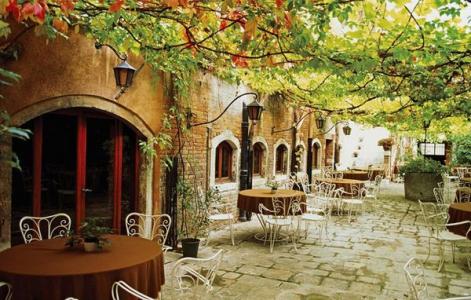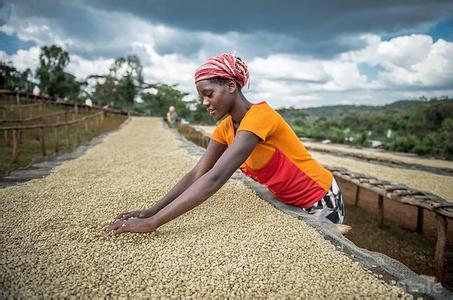A dialogue among baristas; provides an important direction for inspiration for the design of cafes.
China's current and next stage of urban transformation needs to be deepened in three aspects: intelligence, ecology and civilization. Specifically, intelligent cities need to fully combine technology, Internet and big data; ecological cities need to have more awe of nature, and emphasize the dual consideration of human ecology and natural ecology; civilized cities need to express more awe of culture, especially the excavation of local culture, and try to reflect it skillfully in the process of urban construction.
It is under this logic that the enlightenment of coffee and cafes to the city has multiple values. Obviously, it is worth thinking about what kind of sparks of thought and value enlightenment can be stirred up between coffee, cafes and cities. Tsinghua Tongheng's so-called "round-the-stove coffee annual meeting" itself reflects an experimental attitude, there is a lot of room for discussion and imagination.
When coffee becomes a scenery of the city
On that day, snowflakes were floating in the Helsinki Market Square in Finland. Standing on the square to watch people come and go, cruise ships on the Baltic coast in front of the square were slowly coming ashore, blowing a siren from time to time, startling seagulls circling in the sea. This scene, which may have been taken for granted by many Helsinki, has become an unforgettable memory of the city in the eyes of a visitor from the east, and it is still very clear to this day.
Not only that, but what I often remember that day was that there was a canvas shed in the square, and there was a table outside the shed, at which sat an old man in a black coat and scarf, holding a cup of coffee, drinking like me, quietly watching the scenery of the Baltic Sea and coming and going with the people in the square. Snowflakes had occupied the table, but the old man who drank coffee didn't care.
This scene brings some touch to my thinking about the city. At a time when many cities in our country are still keen to build their own urban scenery through high-end landmarks, more and more urban experiences remind us that the people and lifestyle of a city may be the best scenery of a city, and these landscapes reflect a common ethos, but they will be presented to you in unexpected ways and scenes, full of chance. But there is a clear inevitability behind the contingency.
In addition, my imagination of the previous coffee was almost based on Starbucks, and I once thought that it was exclusive to the petty bourgeoisie. Although Starbucks would become a landscape or even a symbol of a city, but coffee itself is an appendage of Starbucks, a consumer space and brand, and coffee does not have much to do with the city and its people. But the scene in Helsinki Market Square reminds us that the coffee experience and coffee culture of more citizens can also boast the taste and temperament of a city.

Important Notice :
前街咖啡 FrontStreet Coffee has moved to new addredd:
FrontStreet Coffee Address: 315,Donghua East Road,GuangZhou
Tel:020 38364473
- Prev

The spread and Development of Coffee in China-Cafe Feasibility study report
Spread and Development of Coffee in China-Coffee Feasibility study report by the beginning of 2016, the planting area of coffee in China exceeded 1.8 million mu, with a total output of more than 140000 tons, accounting for 1.5% of the total global output. Yunnan coffee planting area is 1.77 million mu, with a total output of 139000 tons. Yunnan coffee planting area and output account for more than 99% of China, coffee has become the third largest export in Yunnan.
- Next

Why are other people's cafes so popular? Four cores of brand popularity
Better, more extreme experience the general experience will only make consumers nod and smile; further good experience, consumers can not help but stare; but the ultimate experience, consumers can tell each other. And the latter, it is possible to detonate the epidemic. The reason why most consumer brands are mediocre is that from the product to the service to the brand side, they provide only one
Related
- What documents do you need to go through to open a coffee shop? coffee shop coffee shop certificate processing process
- How to purchase Coffee beans in small Cafe how to choose a suitable supplier for domestic Coffee supply Company
- How to drink Starbucks Fragrance White Coffee? how to make Australian White Coffee? what Italian coffee beans are recommended?
- The Story of Flora Coffee: the name of Flora Coffee Bean and the implication of the Flowers on Florna Coffee
- How much does a cup of coffee cost? How much is the profit of a cup of coffee? What is the profit of the coffee shop in a year?
- Yunnan small Coffee, known as "fragrant Coffee", introduces the characteristics of Alpine Arabica Coffee producing areas in Yunnan, China
- 2023 latest Starbucks full menu price list how much is a cup of Starbucks coffee what is better to drink the most popular hot and cold drinks recommended
- Starbucks different kinds of Coffee Price list Starbucks menu 2023 Top Ten Best drinks in Starbucks
- Starbucks Spring praise Comprehensive matching Coffee Bean theme Story Packaging implication and taste description
- The cost of a cup of coffee latte American coffee cost price and selling price

